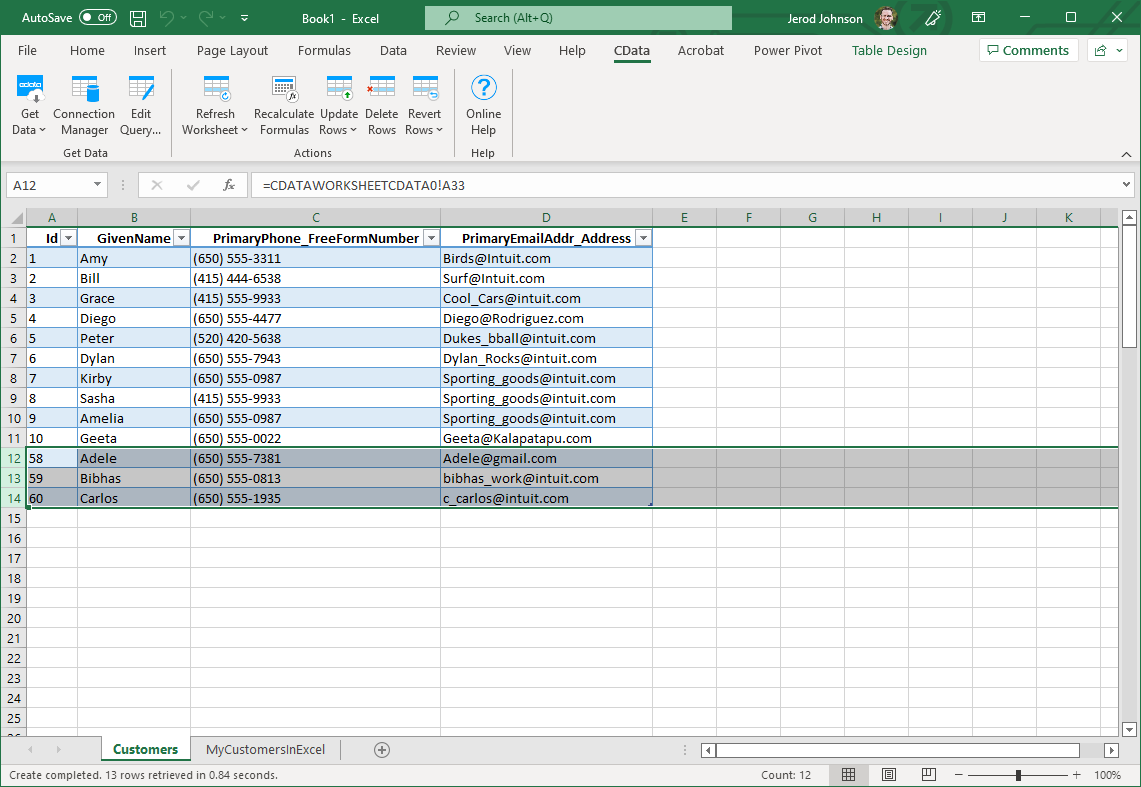Discover how a bimodal integration strategy can address the major data management challenges facing your organization today.
Get the Report →How to update SAS Data Sets from Excel
This article explains how to transfer data from Excel to SAS Data Sets using the Excel Add-In for SAS Data Sets.
The CData Excel Add-In for SAS Data Sets enables you to edit and save SAS Data Sets data directly from Excel. This article explains how to transfer data from Excel to SAS Data Sets. This technique is useful if you want to work on SAS Data Sets data in Excel and update changes, or if you have a whole spreadsheet you want to import into SAS Data Sets. In this example, you will use the restaurants table; however, the same process will work for any table that can be retrieved by the CData Excel Add-In.
Establish a Connection
If you have not already done so, create a new SAS Data Sets connection by clicking From SAS Data Sets on the ribbon.
Set the following connection properties to connect to your SAS DataSet files:
Connecting to Local Files
- Set the Connection Type to "Local." Local files support SELECT, INSERT, and DELETE commands.
- Set the URI to a folder containing SAS files, e.g. C:\PATH\TO\FOLDER\.
Connecting to Cloud-Hosted SAS DataSet Files
While the driver is capable of pulling data from SAS DataSet files hosted on a variety of cloud data stores, INSERT, UPDATE, and DELETE are not supported outside of local files in this driver.
Set the Connection Type to the service hosting your SAS DataSet files. A unique prefix at the beginning of the URI connection property is used to identify the cloud data store and the remainder of the path is a relative path to the desired folder (one table per file) or single file (a single table). For more information, refer to the Getting Started section of the Help documentation.
Retrieve Data from SAS Data Sets
To insert data into SAS Data Sets, you will first need to retrieve data from the SAS Data Sets table you want to add to. This links the Excel spreadsheet to the SAS Data Sets table selected: After you retrieve data, any changes you make to the data are highlighted in red.
- Click the From SAS Data Sets button on the CData ribbon. The Data Selection wizard is displayed.
- In the Table or View menu, select the restaurants table.
- In the Maximum Rows menu, select the number of rows you want to retrieve. If you want to insert rows, you need to retrieve only one row. The Query box will then display the SQL query that corresponds to your request.
- In the Sheet Name box, enter the name for the sheet that will be populated. By default the add-in will create a new sheet with the name of the table.
Insert Rows to SAS Data Sets
After retrieving data, you can add data from an existing spreadsheet in Excel.
- In a cell after the last row, enter a formula referencing the corresponding cell from the other spreadsheet; for example, =MyrestaurantsSheetInExcel!A1.
![A local copy of a table. One row will be inserted. (QuickBooks is shown.)]()
- After using a formula to reference the cells you want to add to SAS Data Sets, select the cells that you are inserting data into and drag the formula down as far as needed. The referenced values you want to add will be displayed on
the restaurants sheet.
![The range of changes to update. (QuickBooks is shown.)]()
- Highlight the rows you want to insert and click the Update Rows button.
As each row is inserted, the Id value will appear in the Id column and the row's text will change to black, indicating that the record has been inserted.









